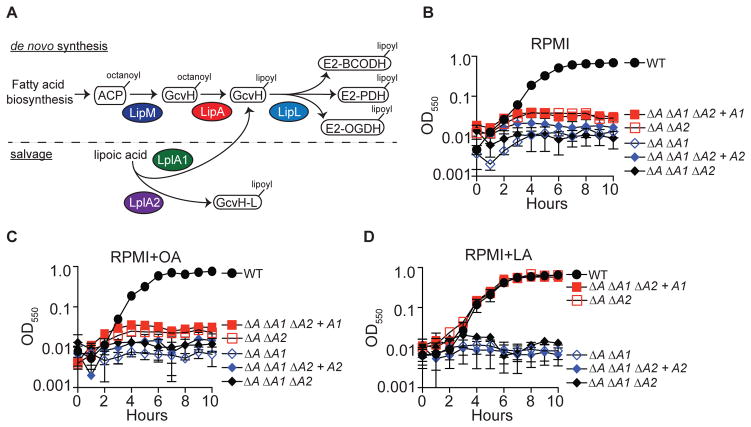Figure 1. LplA1, but not LplA2, restores growth to lipoic acid auxotrophs in vitro.
(A) Model of the lipoic acid biosynthesis and salvage pathways in S. aureus. S. aureus synthesizes lipoic acid via de novo biosynthesis using the enzymes LipM- octanoyl transferase; LipA – lipoyl synthethase; and LipL – amidotransferase. During lipoic acid salvage, S. aureus is thought to use two lipoic acid ligases, LplA1 and LplA2. Current evidence suggests LplA1 lipoylates GcvH, while LplA2 lipoylates the GcvH-Like protein, GcvH-L. (B–D) Growth (OD550) of the indicated lipoic acid auxotrophs in (B) RPMI, (C) RPMI + 25 μM octanoic acid (OA), and (D) RPMI + 5 μM lipoic acid (LA). Strain designations are as follows: Wildtype (WT), ΔlipA ΔlplA1 (ΔA ΔA1), ΔlipA ΔlplA2 (ΔA ΔA2), ΔlipA ΔlplA1 ΔlplA2 (ΔA ΔA1 ΔA2), ΔlipA ΔlplA1 ΔlplA2 + lplA1 (ΔA ΔA1 ΔA2 + A1), and ΔlipA ΔlplA1 ΔlplA2 + lplA2 (ΔA ΔA1 ΔA2 + A2).

